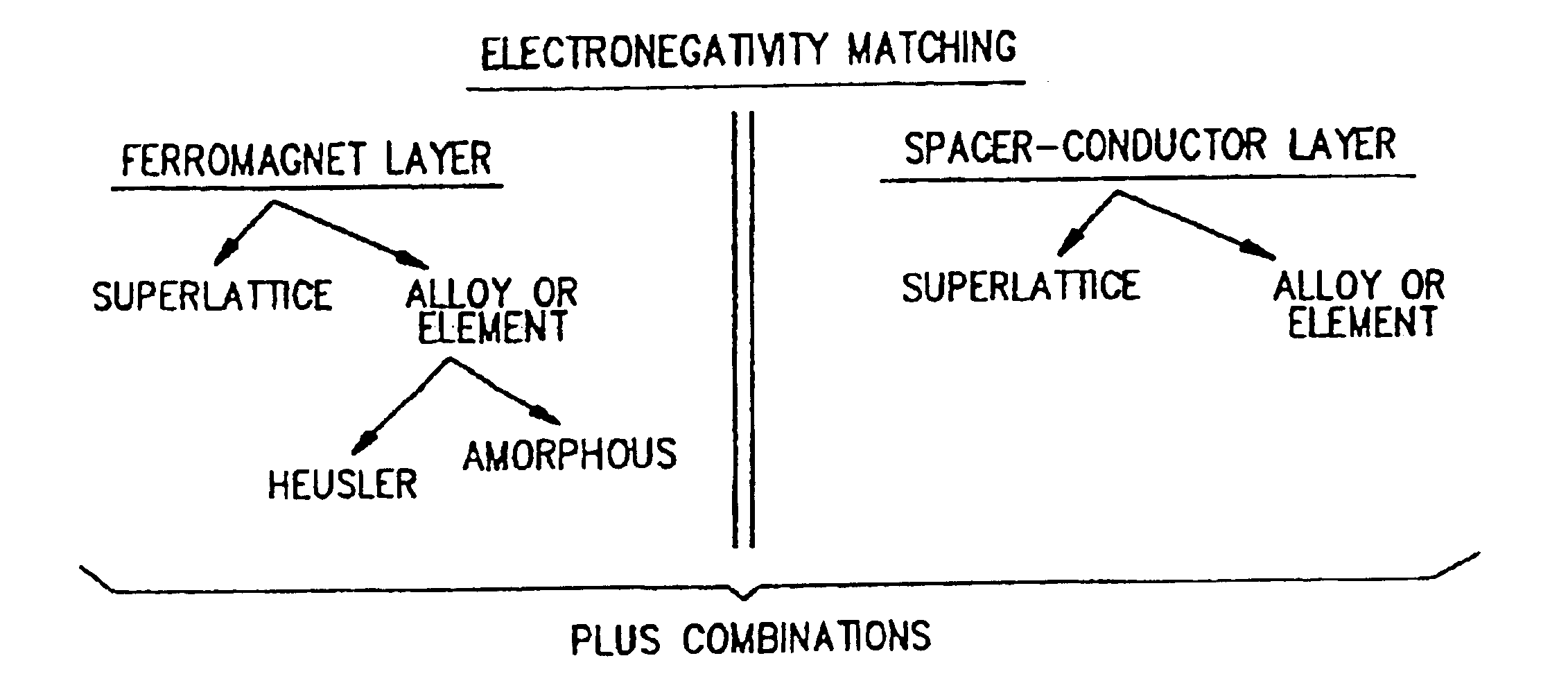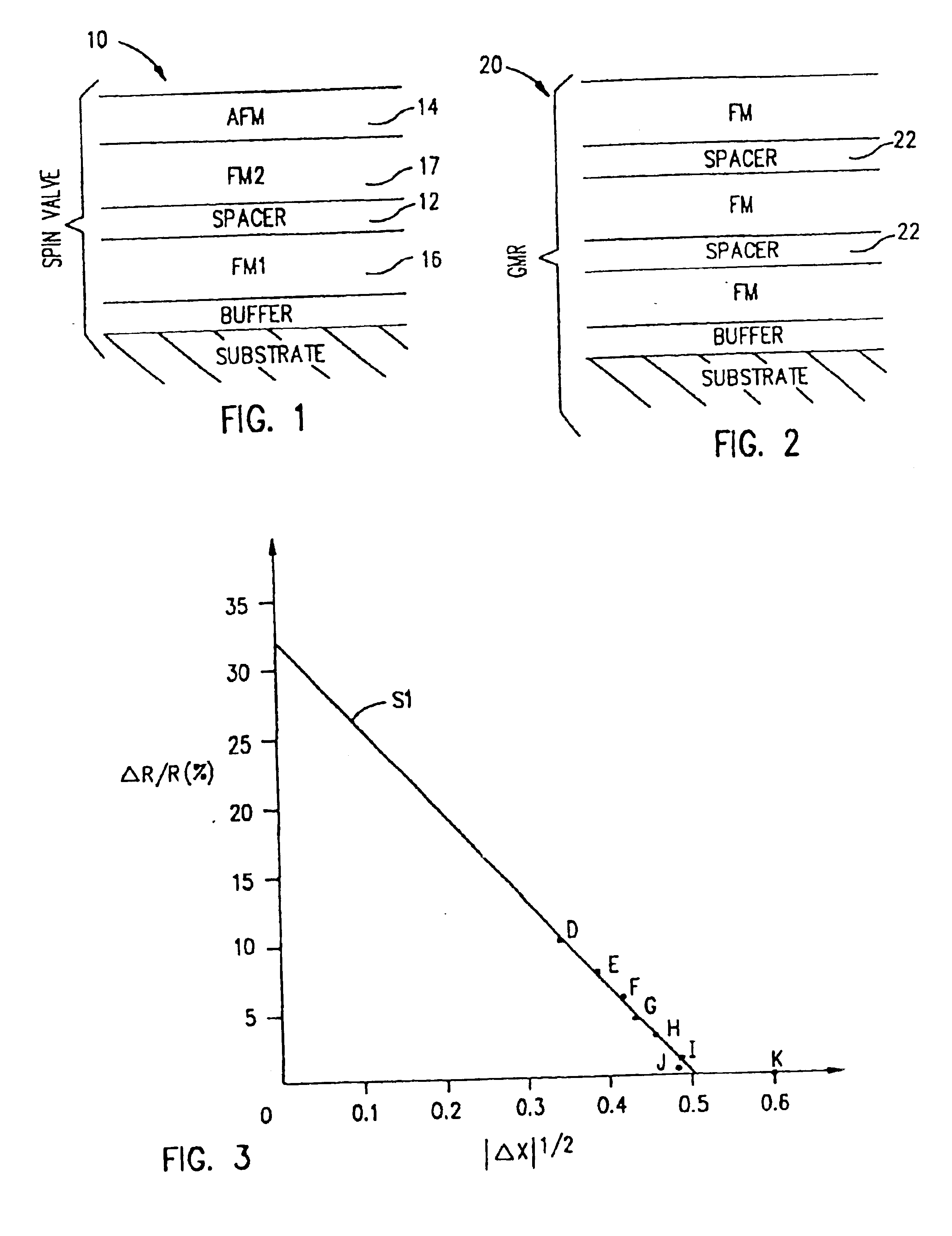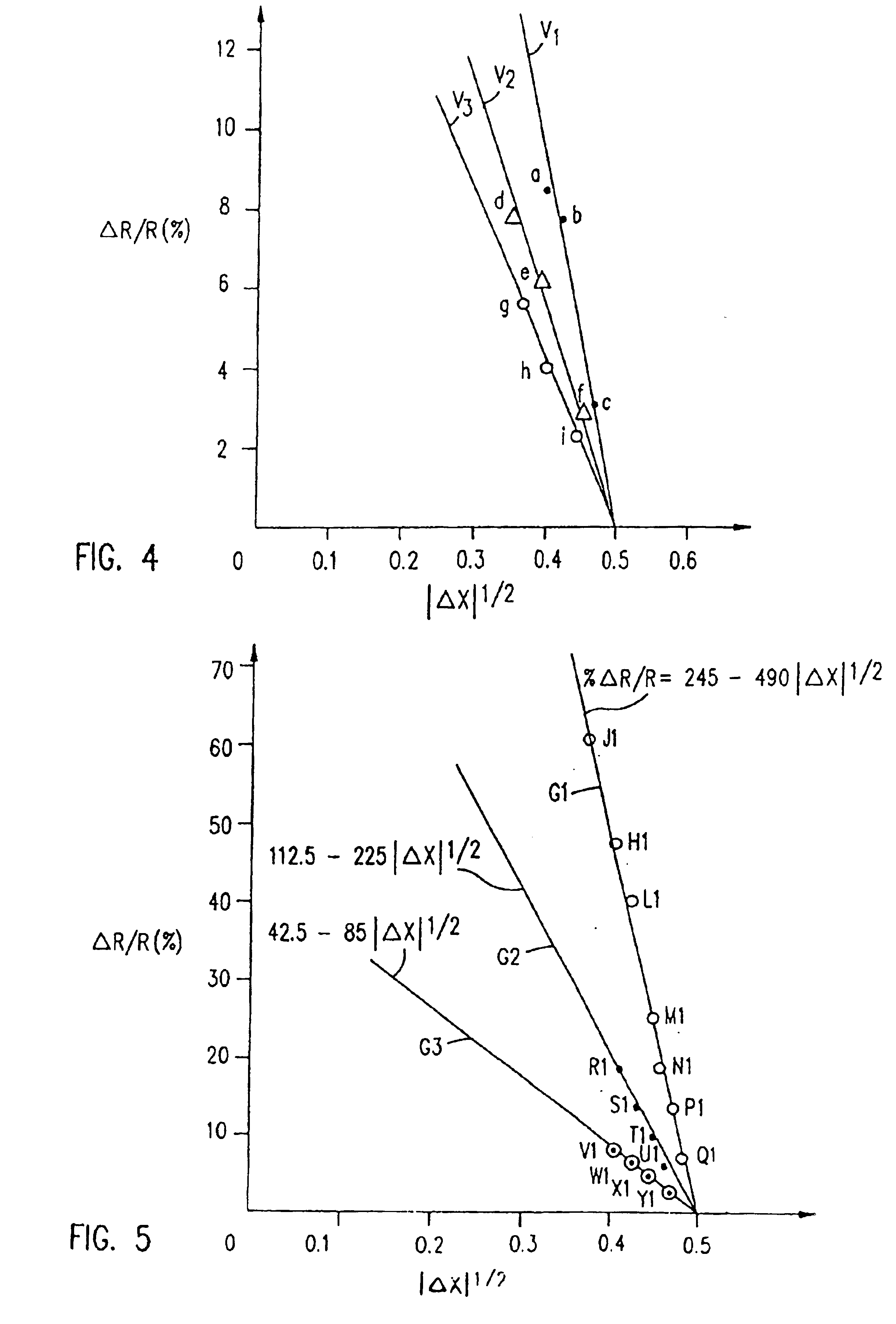Methods and compositions for optimizing interfacial properties of magnetoresistive sensors
a technology of magnetoresistive sensors and compositions, applied in magnetic recording, fluid speed measurement, record information storage, etc., can solve problems such as inability to explain, and achieve the effects of minimizing the difference in electronegativities between layers and spacers, extending the useful lifetime of spin valve and gmr sensors, and minimizing electromigration
- Summary
- Abstract
- Description
- Claims
- Application Information
AI Technical Summary
Benefits of technology
Problems solved by technology
Method used
Image
Examples
example 2
Another aspect of the invention concerns the use of materials exhibiting superlattice structures for FM layers and spacers in GMR and spin valve sensors. The prior art does not teach or disclose the use of such superlattice structures in MR sensors. Significant advantages in MR device performance can be achieved with such superlattice structures, even without the matching of .chi. values. For example, Ni.sub.3 Mn, a ferromagnetic superlattice intermetallic compound having an electronegativity of 2.01, may be matched with Cu.sub.3 Pt, as described in Example 1. The matching of two superlattice structures is desirable in that these ordered structures will improve the thermal stability of sensors containing them. It is believed that this is due to the additional external thermal energy that would be required to disorder one or both superlattice structures before the elements contained in the superlattice would be free to diffuse at the interface. This additional energy ranges between 0...
example 3
A subsequent inquiry may then be made as to whether there exists another ferromagnet with other desirable characteristics, such as minimal magnetostriction (.lambda..sub.s), higher corrosion resistance, and / or lower resistivity than Ni.sub.3 Mn. Ni.sub.3 Fe, also a superlattice alloy, with an electronegativity of 2.07, may in certain applications present a more desirable match than Ni.sub.3 Mn, due to low coercivity (H.sub.c), low .lambda..sub.s and superior corrosion resistance and may be matched with a CuAu superlattice having an .chi. of 2.07.
example 4
This example identifies conductive spacer alloys useful for the matching or minimizing the .DELTA..chi. values between the spacer alloys and appropriate ferromagnetic elements or alloys thereof.
In addition to CuAu and CuPt alloys and their superlattice compositions referred to previously, binary, ternary or higher Ig order alloys of elements such as Cu, Ag, Au, Pt, Pd, Ir, Rh and Ru may be used to match appropriate FMs and provide .chi. values ranging from approximately 1.89 to 2.33. Such alloys may be used to fabricate various devices, including but not limited to spin valve and GMR sensors, based on the electronegativity matching or minimizing of the differences in electronegativities of the present invention. Other superlattice alloys similar to CuPt and CuAu that exhibit ordering phenomena, such as Ag.sub.3 Pt and AgPt, may also be used for implementing this invention.
PUM
 Login to View More
Login to View More Abstract
Description
Claims
Application Information
 Login to View More
Login to View More - R&D
- Intellectual Property
- Life Sciences
- Materials
- Tech Scout
- Unparalleled Data Quality
- Higher Quality Content
- 60% Fewer Hallucinations
Browse by: Latest US Patents, China's latest patents, Technical Efficacy Thesaurus, Application Domain, Technology Topic, Popular Technical Reports.
© 2025 PatSnap. All rights reserved.Legal|Privacy policy|Modern Slavery Act Transparency Statement|Sitemap|About US| Contact US: help@patsnap.com



